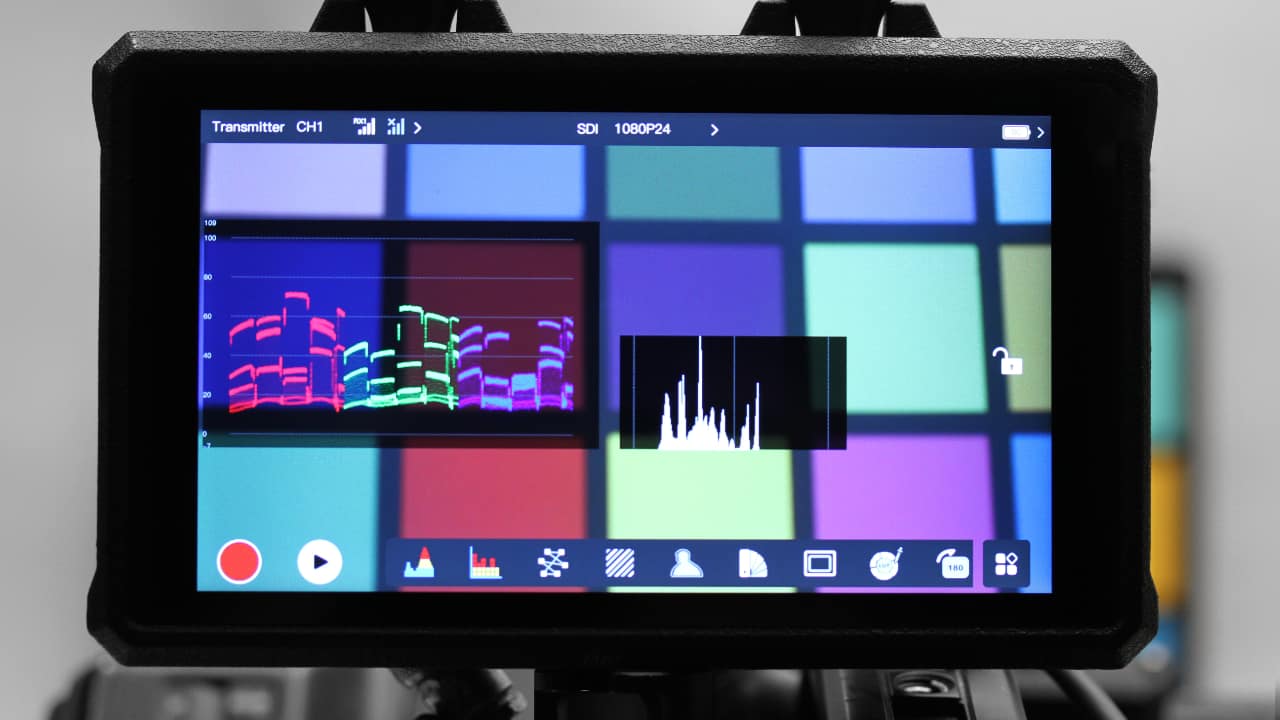
The Enhanced version of the Hollyland Mars M1 wireless transceiver monitor adds some worthwhile features over the original while following the mantra of ‘if it ain’t broke, don’t fix it’.
There’s a part of the film industry which wants all the conveniences of a high-end set but doesn’t have the requisite fleet of white trucks to haul it all around in. That’s the sector of the industry – and it’s a large sector – which would like to do more things with less stuff, one that Hollyland seems keen to serve with its Mars series of video senders.
The device we see here is the $499 Enhanced version of the Mars M1 which adds some worthwhile features over the original, although the basic platform is the same: this is a monitor-transceiver, capable of behaving as a monitor and either a transmitter or receiver. That makes it plausible as either an on-camera display, or as a reference for a director, gaffer, grip, or makeup artist. It’s part of a range which we’ve looked at before in the guise of the Mars 400S transmitter-receiver pair.
Mars M1 Enhanced specs
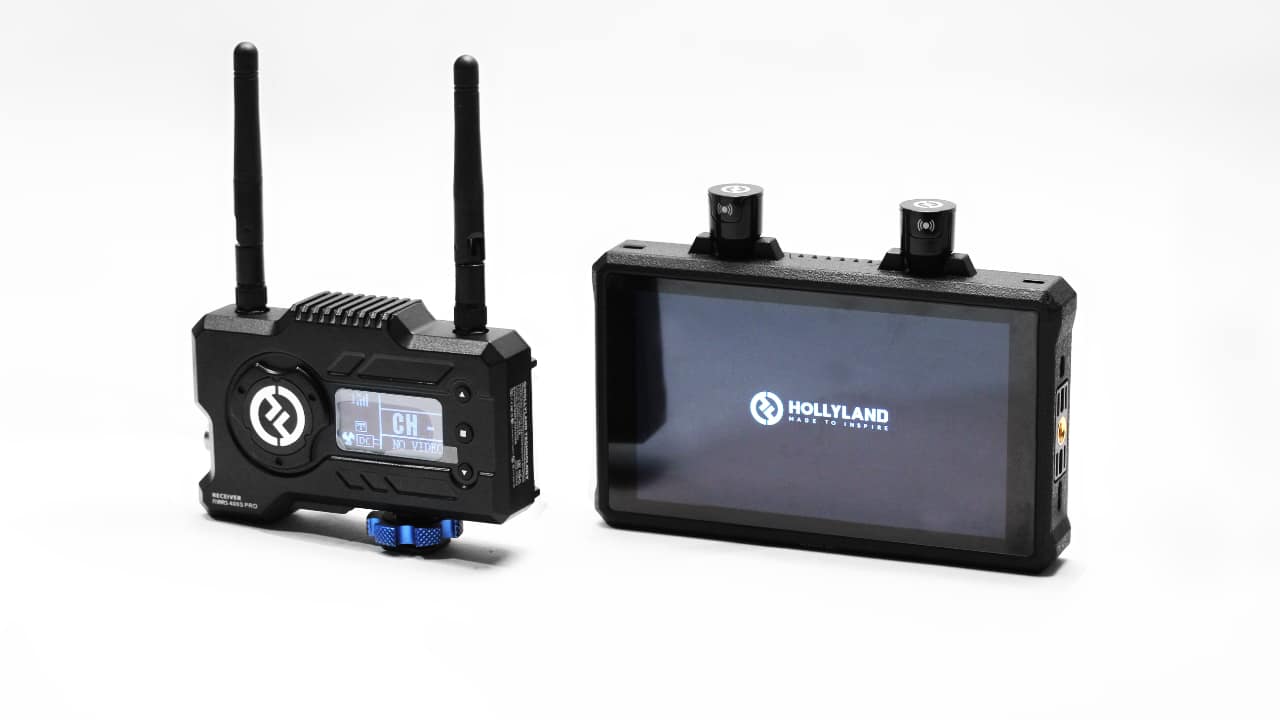
The Mars 400S receiver (left, not included with the M1) will receive signals from the M1 Enhanced transceiver
A Mars M1 can send or receive pictures from or to another M1, or a Mars 400S transmitter or receiver as seen in the images accompanying this review, or a Mars 300 Pro, or a Mars 4K. The M1 will receive UHD images and scale them down for viewing, but it will not transmit them. It’ll also take UHD over HDMI 1.4b input, but in general this is an HD rather than UHD device, not that UHD is particularly relevant on a 5.5” display.
The transmission system operates in the 5GHz band and is H.264 based, so it can’t be a zero-latency transmission system. Given a codec operating on groups of several frames at once, delay must necessarily be at least that many frames, regardless the frame rate. In practice, latency and image quality matches the Mars 400S. The company promotes an .08 second latency, referring to 60-frame formats; it will be more like a fifth of a second at lower frame rates and an eyeball check tends to confirm that.
Straightforward setup
Setup is straightforward; telling the Mars M1 to be a transmitter or receiver is a simple binary choice in a menu, then hit pair on two devices and pictures promptly pop up, so there is – happily – not much to talk about here.
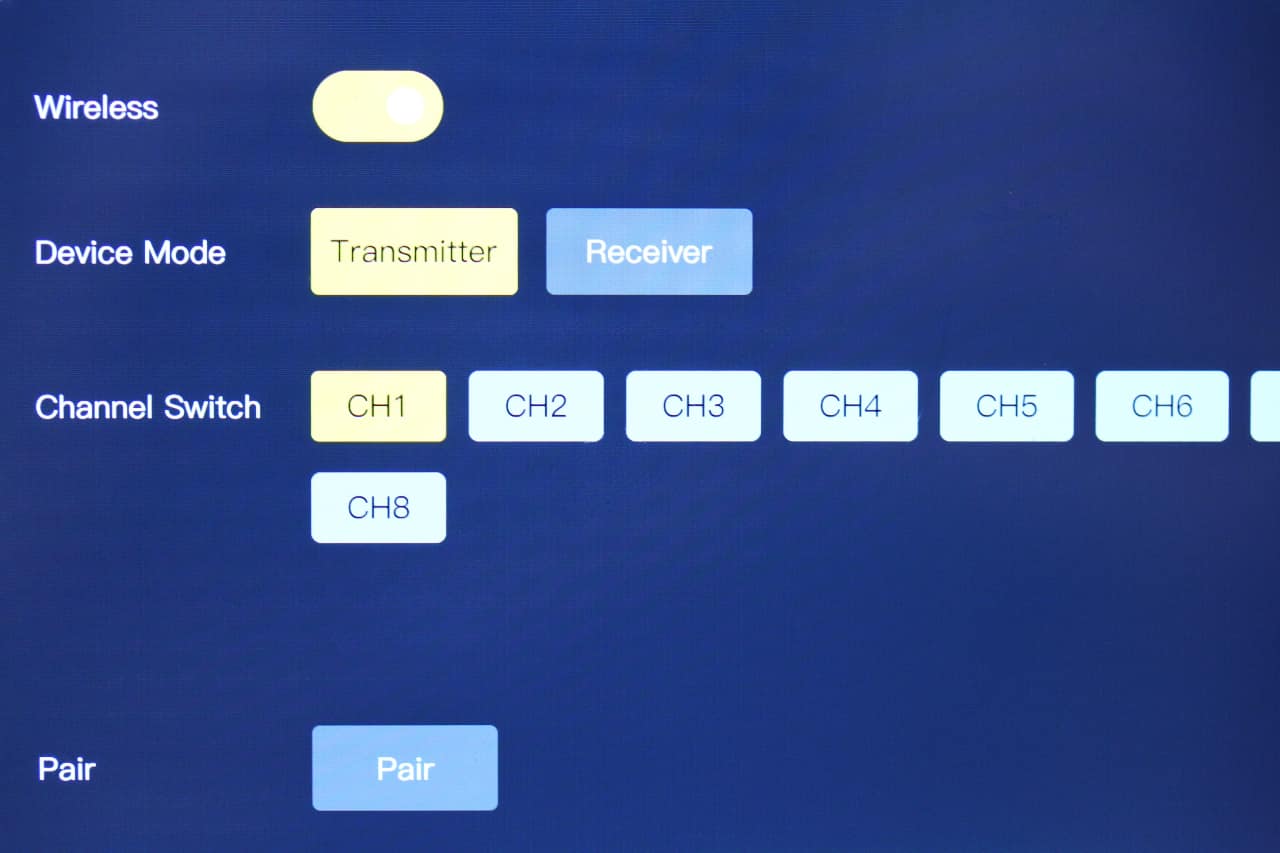
Well, that's pretty straightforward. There is a manual. Most people won't need it
Since the entire purpose of this device is to reduce the amount of equipment that’s latched, strapped, velcroed and duct-taped onto cameras, what really matters here is whether the Mars M1 Enhanced is a good enough monitor to be someone’s main on-camera display. The answer is a cautious yes: there’s possibly room for a seven-inch version, but what we see here is a perfectly competent 5.5-inch, Rec. 709 monitor with 1000 nits of brightness, LUTs, as well as test, measurement and guide displays (particularly, false colour that works like Arri’s). There’s zero perceptible latency from the SDI or HDMI inputs.
A thousand nits is adequate, but not enormous. The average standard-dynamic-range TV is typically 300, and it’s only a stop and a half more than that. It’s not one of those eye-searing devices that blasts effortlessly through the noonday sun in Death Valley, but for the money it’s fine. The LUT capabilities are somewhat upgraded in the Enhanced version, with a wider variety of cube resolutions supported. There’s also user-variable anamorphic desqueeze and an RGB mode for the waveform, among sundry other improvements over the original M1. It still doesn’t transmit the LUTs; there is no wireless downstream colour processing and for some reason no SDI out, though there is HDMI out.
Solid build
As with Hollyland’s other devices, the physical build is solid. It’s a plastic chassis, albeit reasonably chunky, and the company has added threaded DC barrel connectors on the Enhanced edition. Connectors plural? Yes, because there’s DC in and out, a thoughtful addition to an already pretty comprehensive set of power options. For some reason the output is marked 8.4V, though that’ll be mostly compatible with devices intended to run from two-cell Lithium Ion batteries like the NP-F types with which the M1 is compatible. There is no significant rim around the display, so it’s best to avoid putting it face down on anything other than a smooth surface, though there is a tempered glass screen protector which is available as a spare part.
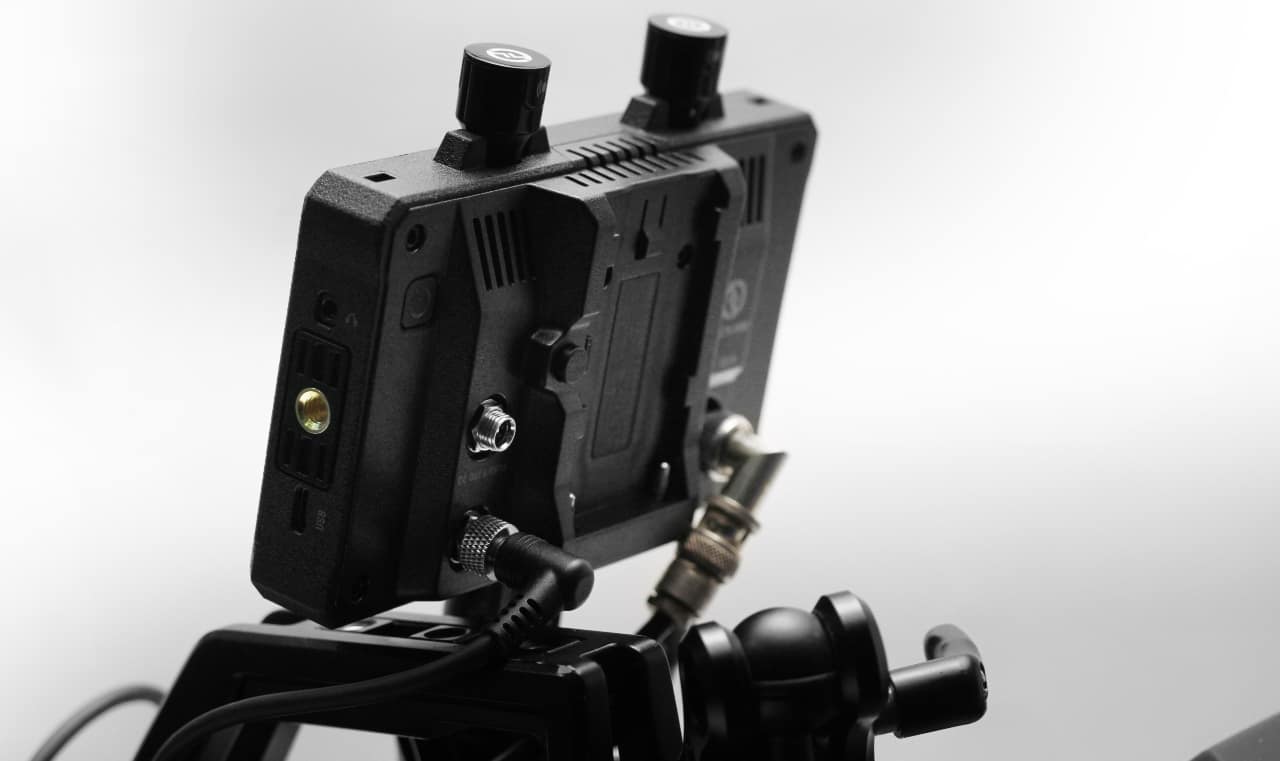
Power in and out is a nice touch; the HDMI is on the other end
Uniquely, the two antennae are squat little things which the company describes as “capsule antennas,” which are easier to leave in place when packing the device for transit and probably harder to break than the small WiFi-style antennae supplied on things like the Mars 400S and many competing devices. It’s easy to forget that the RP-SMA connectors used for this kind of thing are really intended for installation, not daily operational use, and the option to fit and forget is welcome.
A good idea well executed
Overall, the Hollyland Mars M1 Enhanced seems like a good idea. As a combined operator’s display and transmitter it saves us one device and two cables, and therefore three less things to buy, carry, assemble and break. That’s what this is really about – more features from less hardware. As a director’s monitor it potentially requires nothing more than a battery, a set of headphones (there’s a 3.5mm output) and perhaps a shoulder strap, which is among the company’s accessory options.
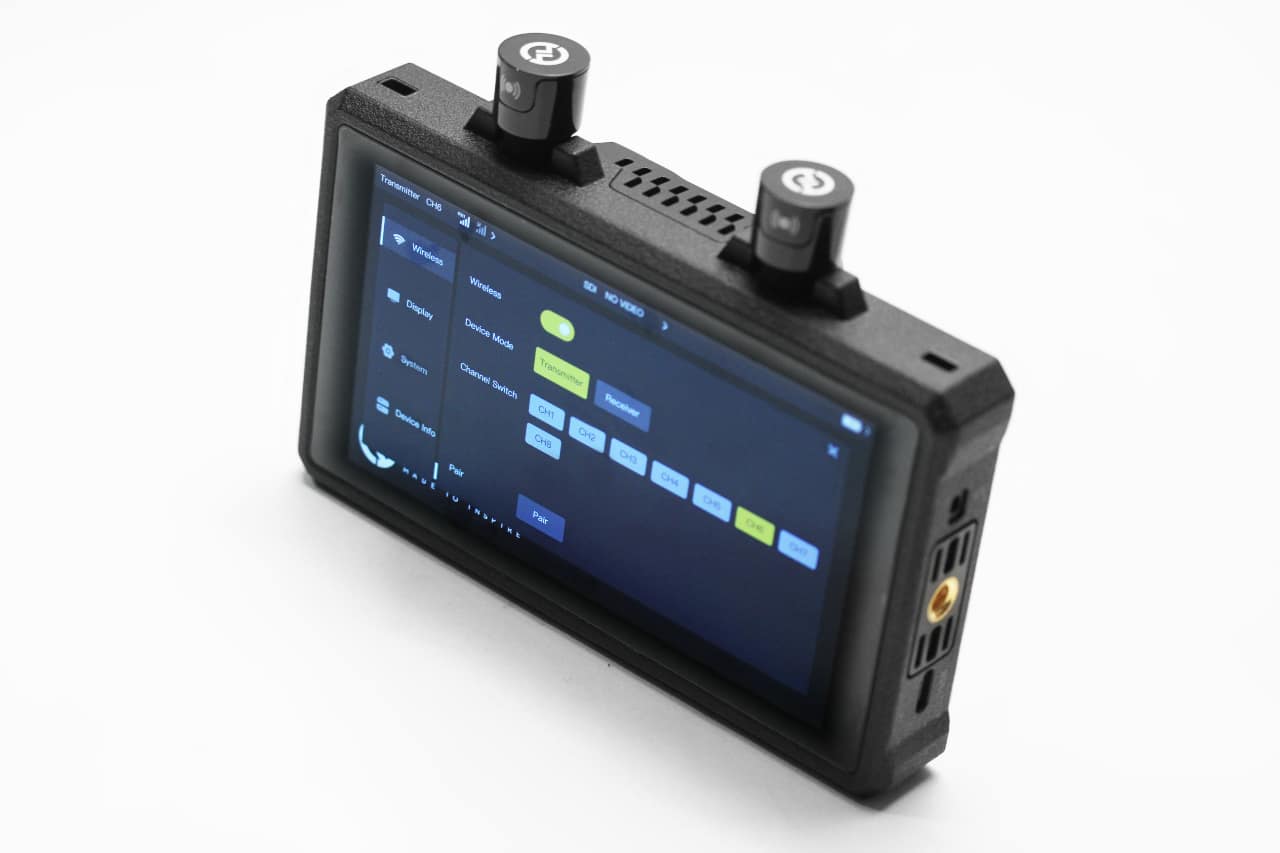
It's barely bigger than a monitor without any of the radio features, which is nice
Future development of this kind of idea really depends how much Hollyland wants to start competing with other monitor manufacturers, although it has pretty much already dived headfirst into that market by default. Larger, brighter displays beckon. It’s easy to think of combining devices like this as simple, but underlying the concept is a lot of technology. In the end, the Mars M1 Enhanced is well-enough done that it might leave camera crews on bigger shows wondering why they’re having to lug around so much gear in order to do just one job, and as a receiver, it’s small and handy. There’s an option to buy a pair, and a lot of people will.
Tags: Production Monitors Hollyland


Comments